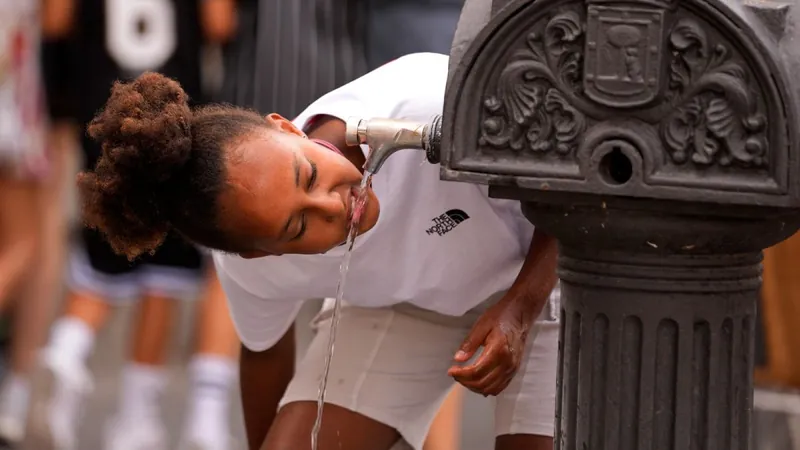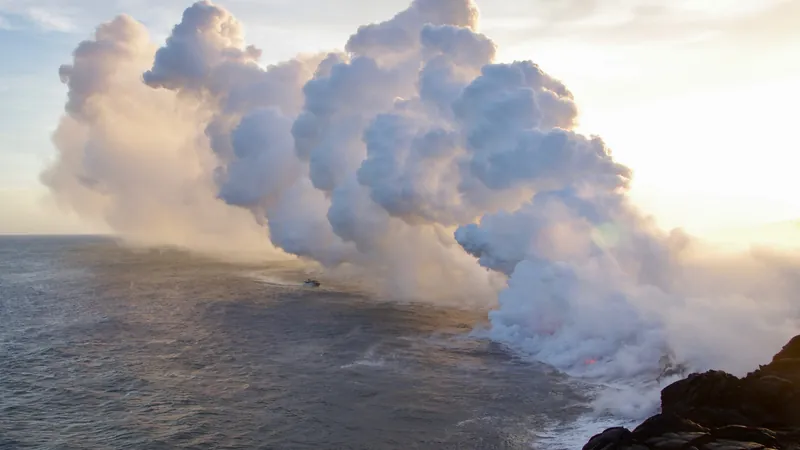
Shocking Findings: Most Microplastics in Drinking Water Are Smaller Than EU Detection Limits!
2025-01-17
Author: Sarah
Introduction
Recent research has revealed that the majority of microplastics found in both bottled and tap water are alarmingly smaller than the European Union's established detection limits. These findings have raised concerns among scientists who are now calling for a reevaluation of the EU's guidelines regarding microplastic measurement.
The Study
In a groundbreaking study conducted in Toulouse, France, researchers tested 10 different brands of bottled water alongside a tap water source using a novel method capable of detecting very fine microplastics smaller than 20 microns (µm). Until now, these tiny plastic particles have been largely overlooked due to previous detection challenges. However, new evidence suggests that these smaller microplastics could pose greater health risks, as they are more likely to penetrate the intestinal barrier and enter the bloodstream.
Regulatory Limits
Currently, the EU's March 2024 decision on measuring microplastics restricts the analysis to larger particles ranging from 20 µm to 5 mm. Oskar Hagelskjaer, CEO of Microplastic Solution and the study's lead author, emphasized the urgency of updating these detection standards, stating, “It makes very little sense to set the detection limit at 20 microns when research indicates those under that size are potentially more hazardous.”
Findings
The findings are sobering: a staggering 98% of the microplastics identified in the samples were under the 20 µm threshold, with 94% measuring less than 10 µm. These results were made possible through the use of highly sensitive instrumentation and rigorous quality control measures, ensuring that contamination during sample processing was minimized.
Comparative Analysis
Notably, the study uncovered significant variations in microplastic concentrations between bottled and tap water. The tap water sourced from Toulouse contained an unsettling 413 microplastic particles per liter, often exceeding levels found in eight of the ten bottled water brands surveyed. This suggests that both bottled water and treated surface water have comparable levels of microplastic contamination, while groundwater appears to be less affected.
Possible Sources of Contamination
Hagelskjaer speculated that the contamination could stem from the extensive filtration processes used in treating water sourced from the Garonne River. Interestingly, although the bottled water was packaged in polyethylene terephthalate (PET), researchers found that PET was not the dominant plastic detected in the water, suggesting other sources may contribute significantly to the contamination.
Health Implications
As the presence of microplastics invades every corner of the globe, concerns regarding their implications for human health intensify. Dr. Bethanie Carney Almroth, an ecotoxicologist at the University of Gothenburg in Sweden, noted the pervasive nature of this issue, highlighting that microplastics are now found in human bodies and may be linked to health concerns. "It's a very pervasive problem," she remarked, "with no place left on this planet that isn't contaminated."
Conclusion
With growing evidence of the potential health impacts associated with these contaminants, the urgency for regulatory changes within the EU and beyond cannot be overstated. What are the long-term consequences of microplastic exposure? The data points to a pressing need for vigilance and action as we navigate this escalating environmental crisis.





 Brasil (PT)
Brasil (PT)
 Canada (EN)
Canada (EN)
 Chile (ES)
Chile (ES)
 Česko (CS)
Česko (CS)
 대한민국 (KO)
대한민국 (KO)
 España (ES)
España (ES)
 France (FR)
France (FR)
 Hong Kong (EN)
Hong Kong (EN)
 Italia (IT)
Italia (IT)
 日本 (JA)
日本 (JA)
 Magyarország (HU)
Magyarország (HU)
 Norge (NO)
Norge (NO)
 Polska (PL)
Polska (PL)
 Schweiz (DE)
Schweiz (DE)
 Singapore (EN)
Singapore (EN)
 Sverige (SV)
Sverige (SV)
 Suomi (FI)
Suomi (FI)
 Türkiye (TR)
Türkiye (TR)
 الإمارات العربية المتحدة (AR)
الإمارات العربية المتحدة (AR)